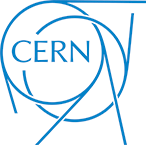On 30 March 2010, exactly ten years ago, a metaphorical champagne bottle was smashed across the bow of the Large Hadron Collider (and several non-metaphorical ones were popped) as CERN’s flagship accelerator embarked upon its record-breaking journey to explore strange new worlds at the high-energy frontier: it collided protons at an energy of 3.5 teraelectronvolts (TeV) per beam for the first time. Since then, the largest scientific instrument ever built has enabled scientists to study a variety of physics phenomena, with its crowning achievement being the discovery of the Higgs boson in 2012.
The LHC wasn’t built just to find the Higgs boson – or prove that it didn’t exist! Over the last ten years, it has allowed scientists to test the Standard Model of particle physics with higher precision than ever before, demonstrating the theory’s robustness. In addition to the proton–proton collisions that are the LHC’s staple, scientists have used collisions of lead nuclei to recreate and examine the conditions that prevailed in the very early universe, when quarks and gluons existed freely. And the Higgs boson itself has brought entirely new perspectives to physics – an elementary particle with no intrinsic angular momentum, the first of its kind.
The path to proton–proton collisions at the teraelectronvolt scale – whose story goes as far back as 1977, when such a machine was first conceived – was fraught with challenges. No hadron collider of this size and energy had been built before, and technical and scientific expertise had to be cultivated to bring it to fruition. Global collaborations were formed to design and build the detectors at each of the four collision points around the ring.
About CERN
Founded in 1954, CERN is the European laboratory for particle physics. Sitting astride the Franco-Swiss border near Geneva, it was one of Europe’s first joint ventures and now has 22 member states. CERN operates a unique range of particle accelerators that enable research into the fundamental particles and laws of the Universe, including the Large Hadron Collider (LHC), the largest scientific instrument on Earth. The 60-year history of CERN is marked with impressive achievements in the construction and operation of powerful linear and circular accelerators. Moreover, CERN offers unique infrastructures for the development of the most sensitive particle detectors in the world, including the four main LHC detectors – ATLAS, CMS, ALICE and LHCb. General-purpose test beam lines provide beams of electrons, muons and hadrons in a very wide energy range for testing the detectors used in the LHC and in its major upgrade, the High-Luminosity LHC, as well as in future colliders and in neutrino experiments.



